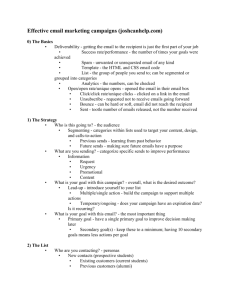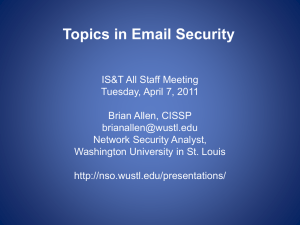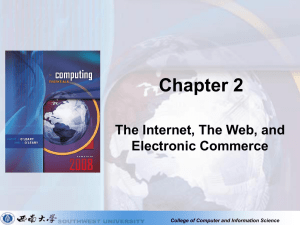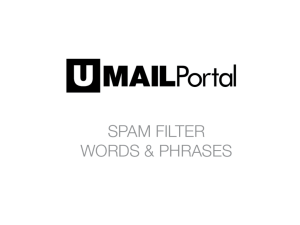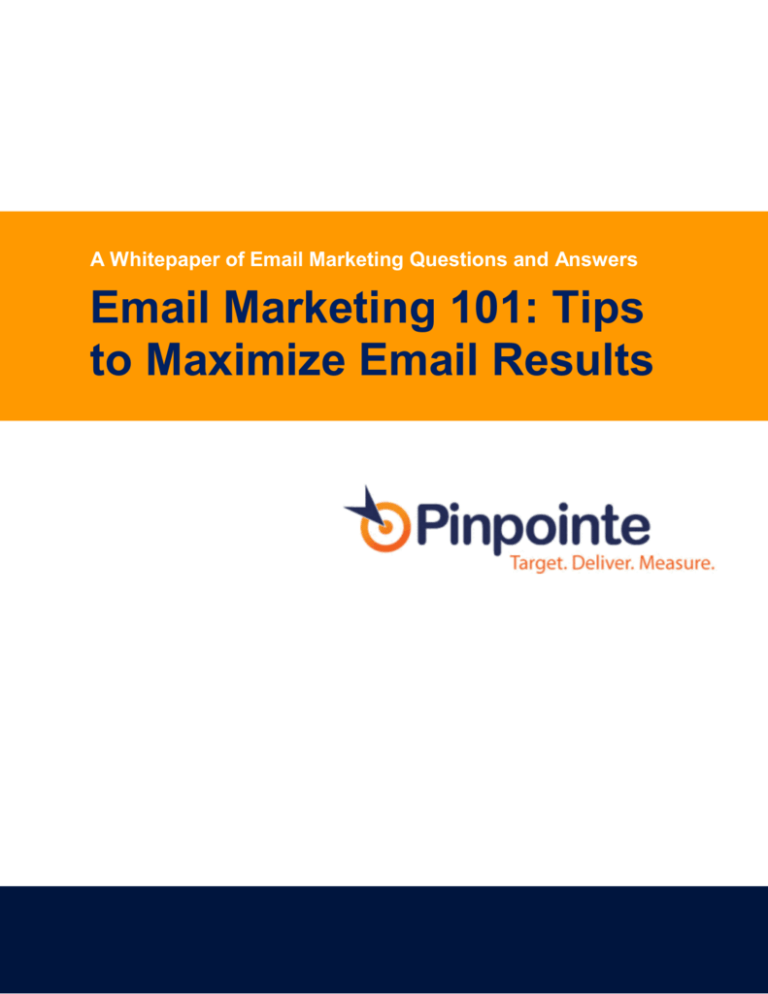
A Whitepaper of Email Marketing Questions and Answers
Email Marketing 101: Tips
to Maximize Email Results
Page 0 of 8
Introduction
This document summarizes the questions that were asked during the session and offline in the
recent Pinpointe webinar: "Email Marketing 101: Maximizing Email Results". We had dozens of
questions that we were not able to answer online, so if you posted a question that we didn't get
to during the online session, please check here, as we've done our best to answer and address
all questions that were asked.
Q: CAN I SEND EMAIL TO PEOPLE WHO HAVE NOT DIRECTLY REQUEST EMAIL FROM ME
WITHOUT VIOLATING THE CAN-SPAM ACT?
A: Yes. However, your correspondence must abide by these rules in order to remain compliant
with CAN-SPAM regulations:
•
The header (send-from address) must be accurate. It cannot be false or misleading.
•
The subject line must also be accurate. It cannot be deceptive or misleading and must relate
to the content.
•
Any correspondence must have an opt-out method. The current CAN-SPAM regulation
requires that opt-out requests be honored within 10 days. However as best practices, we
recommend honoring any requests immediately. Most Email Service Providers, including
Pinpointe, automatically manage opt-outs and will automatically remove contacts upon
their request.
•
Unsolicited Commercial Email (ie, sending correspondence to someone with whom you do
not have a pre-existing business relationship and/or has not explicitly requested your
correspondence) is fully permitted but must be identified as an advertisement, and must
include a valid physical address and phone. In the latest ruling, a post office box is
considered to be an acceptable postal address.
Q: WHERE CAN I LEARN MORE ABOUT THE CAN-SPAM ACT?
You can check the FTC website at: www.ftc.gov/spam
Or call toll-free: 1-877-FTC-HELP (1-877-382-4357)
Q: HOW HAS THE GROWTH IN BLACKBERRY AND OTHER HANDHELD DEVICES IMPACTED
EMAIL DESIGN?
A: The 'use scenario' we are seeing is that people use their mobile devices / smart phones / etc
to do real-time checking (often skimming) of email and making a quick decision whether to keep
the email and read it in more detail later, or delete it. They then go back and review / act upon
more important emails from their desktop. Industry metrics indicate as many as 40% of
Executives check their email on a Blackberry or similar device first. This means that, more than
ever, it is critical to design emails with this in mind. Ensure that all correspondence is sent with
both HTML and Text versions (using MIME). Most good ESPs, like Pinpointe, support this. The
Page 1 of 8
text and HTML versions can be different but ensure that the Text version is concise, includes a
link to the web version of the email, and is designed for a narrow display.
Q: YOU USED THE TERMS B2B AND B2C - WHAT DO THESE MEAN?
"B2B" means 'Business to Business' - as in businesses communicating with other businesses,
whereas “B2C” means 'Business to Consumer'.
Q: CAN YOU SHARE STATISTICS ON SPAM COMPLAINTS OR OTHER REPUTATION ISSUES?
Yes. ISPs who carry email traffic will generally "tolerate" a SPAM complaint rate of
approximately 1 complaint per 1,000 ~ 5,000 emails. It is up to the sender or the Email Service
provider to directly respond to any ISP requests regarding end user SPAM complaints.
At Pinpointe, we service B2B customers. We work closely with our business customers to
ensure CAN-SPAM compliance, list integrity and email best practices. As a result, our spam
complaint ratios are significantly better as we see only 1 complaint per 20,000 emails. In our
testing, we have seen B2C (Business-to-Consumer) emails generate unusually high complaint
ratios as high as 1 complaint per 250 emails. This is not uncommon as many consumers (e.g.
@yahoo.com or @msn.com addresses) often hit the 'This is SPAM' button instead of deleting
unwanted email, or opting out.
Q: WHEN USING PINPOINTE'S ON-DEMAND EMAIL MARKETING SERVICE, CAN WE ATTACH A
PDF FILE TO THE OUTBOUND EMAILS DURING THE CAMPAIGN?
A: Yes. However, we recommend that you host the pdf and link to it in the body of your email.
Most spam filters will automatically quarantine any attachments, including pdfs. Therefore your
pdf will not reach your recipients. Pinpointe includes unlimited storage for document and image
hosting.
Q: ARE ANALYTICS AND E-MAIL DEPLOYMENT HELP, REPORTS AND E-MAIL EFFECTIVENESS
METRICS INCLUDED IN THE MONTHLY PRICING PACKAGES FOR PINPOINTE'S EMAIL
SERVICES?
A: yes, advanced reporting, help and effectiveness metrics are all standard features. If you
would like to learn more, or to schedule a live 1 on 1 demonstration of Pinpointe, please contact
us at: 408-834-7577, Option #2; sales@pinpointe.com.
Q: WHAT THE "40/40/20 RULE"?
When sending email, 40% of the recipient's response is driven by the email title and send-from
address; 40% of the response is driven by the 'call to action' (e.g., the 'offer' or links to click on
for the recipient to learn more about the offer) and the remaining 20% of the email "value" is
based on the actual content, which includes the text and graphical layout.
The lesson here is that, time spent on testing and optimizing the title and 'call to action' are well
spent.
Page 2 of 8
Q: HOW DO YOU INSERT ALT TEXT WITHIN AN EMAIL?
When impeding any images in your email correspondence, keep in mind that most email clients
(Outlook, Entourage, Gmail, etc) by default have image display turned OFF. So, if your email
includes images, the recipient will see only a box with a red 'X' where the image belongs, until
they manually enable 'display images' in their email client.
That's why it is useful to add 'ALTernate' text that will be displayed in the event the image is not
displayed. To do this, simply add the following information to a graphic image within your email:
ALT="Insert your ALTernate text here"
Q: YOU MENTIONED THAT CREATING EMAIL CONTENT IN MS WORD AND THEN DIRECTLY
CAN
YOU CLARIFY?
PASTING THE RESULTS INTO AN HTML EMAIL OR CAMPAIGN EDITOR MAY NOT WORK.
A: MS Word is not designed or optimized for creating HTML content. If you create content in
these products and then cut and paste the content into an HTML editor, and then look that the
HTML content, you will see that they insert significant extraneous HTML formatting code. This
code can cause some SPAM filters to block your content because it may look like garbage
content to the SPAM filter.
Instead, consider either using an HTML editor or design product (MS Expression, or one of
several Adobe products).
Q: HOW MANY LINES LONG SHOULD AN EMAIL BE LIMITED TO?
There is no set length, and it depends on the objective of the email. For example, a monthly
update / newsletter format might be 1-2 pages. Be sure to put a list of topics at the beginning of
the newsletter, so it is easy for the recipient to 'jump' to specific sections that may be of
interest. A brief update, that is extending an offer to download a whitepaper or join an event,
usually performs best if the email is short, to the point, and includes links to landing pages with
additional information. Another common style is the 'educational, email blog's style. If you
subscribe to 'The Motley Fool' for example, you've seen this. The writing style is personalized, 1
on 1 communication that typically covers a topic or two, and explains the topic in detail. This
might be 2-4 pages long, and can include links to landing pages and external documents with
additional supporting materials.
Q: WHEN SENDING AN EMAIL IS IT BETTER TO USE A 'SEND FROM / REPLY TO' ADDRESS SUCH
AS 'SALES@MYCOMPNY.COM' OR 'MY NAME@MYCOMPANY.COM '?
A: In most cases, you will see better results by using a specific contact person (yourself for
example) vs. a general address like 'support@' or 'sales@'. Keep in mind that your recipients
take only a second or two to decide whether or not to open your email. If they do not recognize
your company, they are likely to skip over the email. Also, general addresses are less personal,
which reduces open rates.
Page 3 of 8
Actual results. Based on analysis of various campaigns across our system we have seen that
using a specific personal name vs. a general email address can improve the net open rate by
15% - 35%.
Q: DOES PINPOINTE INCLUDE SURVEY CAPABILITIES? DO YOU HAVE THE FUNCTIONALITY TO
HANDLE SURVEYS AND RESULTS ATTACHED TO A DISTRIBUTED EMAIL?
A: Yes, Pinpointe includes full survey capabilities as a standard feature.
Q: WHAT IS THE DIFFERENCE BETWEEN A 'HARD' BOUNCE AND A 'SOFT' BOUNCE?
A: A 'Hard' bounce is a permanent fatal errors such as - the domain no longer exists (company
went out of business), the email does not exist (the person retired / left the company / died).
A 'Soft' bounce is typically an intermittent, temporary condition. For example, the recipient's
email server might be temporarily overloaded or offline, or they maybe over their inbox quota
size.
Pinpointe automatically manages hard and soft bounces. Hard bounces are automatically
flagged and removed from your list so that you do not 'waste' email credits sending to nonexistent emails (doing so can also damage your email credibility). Soft bounces are
automatically re-tried 3 times.
Q: IS IT CONSIDERED 'BEST PRACTICES' TO OFFER A WEB VERSION OF THE EMAIL IN CASE
THE MAIL CLIENT CANNOT DISPLAY INTENDED EMAIL?
Absolutely. Pinpointe's on-demand email service automatically creates an online version of
each email campaign that is hosted on our system. A customized link to the web version can be
easily inserted into all emails.
Q: CAN YOU SUGGEST A GOOD TEXT TO IMAGE RATIO?
A: There is no set, best ratio. Avoid using large image blocks. A guideline would be - use images
only where necessary and use text wherever possible. In addition, you can use ALT tags for
images - this will improve your text to image ratio.
Earlier SPAM filters relied heavily on specific keywords to determine how 'spammy' the email
was. Spammers simply created images that included the spam words, or created an email that
was a single big image. This allowed them to get by SPAM filters. However most SPAM filters
now look at the amount of content that is text vs. images and if you are using a large number of
images, content will often be considered SPAM.
Q: IF 65% OF EMAIL CLIENTS BLOCK IMAGES BY DEFAULT, WHAT IS THE IMPACT ON
REPORTED OPEN RATES?
A: If images are blocked and the recipient does not download images, then the tracking image
pixel will not be downloaded and the email open cannot be tracked. The result is that actual
open rates are / will be higher than what is reported. Presently there is no way around this.
Page 4 of 8
Q: WHAT QUALIFIES AS A CALL TO ACTION (CONTACT US, DOWNLOAD, ATTEND...) ?
A: A 'Call to Action' is your offer. For example, an offer a link to download a whitepaper, or
registration to attend a Webinar, that is a call to action. A call to action might also be: " please
call me at…" or "please email me at: …" However we generally recommend using links within an
email when possible because responses can then be directly and automatically tracked by
Pinpointe.
Q: WHAT'S A "GOOD" OPEN RATE, AND A "GOOD" CLICK-THROUGH RATE?
A: There are so many factors that impact open rates that it is difficult to predict a 'good' vs. 'bad'
open rate. It is more useful to look at your own open rates relative to other campaigns you are
running to determine if one campaign is generally doing better / worse than others, based on
net open rates and / or click through rates.
That said, assuming that you are following 'best practices' for the title, offer, content, send
times, send frequency, list management etc, you might expect to see the following rough unique
open rates (please refer to slide #15 for 3 specific list response rates):
•
Opt-in / managed list: 18% - 30% open rates are common; 35%+ are achievable.
•
Purchased/ rented list: 5% - 8% per campaign, assuming you have purchased a high quality
list that is not generated using 'web scraping' techniques. For this reason, virtually all ESPs
(email service providers) prohibit the use of purchased or rented email lists.
Q: WHAT IS CSS?
A: "CSS" means Cascading Style Sheet. For web design, it is considered best practices to collect
all style definitions and put them into a style sheet that can easily be referenced. However,
email clients generally do not handle CSS styles well, if at all. Please refer to the next question
for more information on why this is important.
Q: WHAT'S THE DEFINITION OF AN INLINE STYLE?
A: When creating web pages, it is considered 'best design practices' to create what are called
CSS (Cascading Style Sheets), which include all style definitions. You then reference the 'CSS'
style sheet.
However, most email clients do not use CSS style sheets properly, so any styles must be included
'inline' within your email document. 'Inline styles' are styles that are defined directly within
your HTML email, and should be contained between the <BODY> tags. Styles can be used to
define fonts, font colors, spacing, table formatting etc that you may use repeatedly throughout
an HTML document (or HTML emails).
Page 5 of 8
Pinpointe Questions
Q: WHAT SETS PINPOINTE APART FROM LOW END SOLUTIONS LIKE CONSTANT CONTACT?
A: Pinpointe offers the following advanced features and services:
•
Pinpointe services B2B customers, so we are one of the only email vendors that permits the
use of purchased lists from qualified database vendors like NetProspex. Constant Contact
and others have Terms of Use policies that forbid using purchased lists, and standard policy
is to disable your account without refund.
•
Pinpointe Professional edition is a powerful full-featured email system with WYSIWYG
editor, spam checker, email previewer and more.
•
Pinpointe Enterprise edition is for larger enterprises who need 5 ~ 250 users (seats) and
send 300,000 emails – 10M+ emails /month.
•
Pinpointe transparently integrates with Google Analytics, so all of your campaigns can be
tracked, monitored and analyzed within Google analytics.
Q: WHAT IS PINPOINTE'S PRICING?
Pinpointe's pricing is based on the number of emails sent per month. We offer some of the
industry’s most competitive pricing. There are no contracts, up front fees or long term
commitments.
For the latest pricing please check www.pinpointe.com/get-started.
Page 6 of 8
About Pinpointe
Pinpointe is a leading provider of on-demand email marketing automation software based in the
heart of Silicon Valley, California. As former High Tech B2B marketers, we’ve been in your
shoes. Our team has a passion for helping B2B marketing professionals communicate with
existing customers, and target new prospects through behavioral targeting, improved
segmentation and message personalization.
Other Resources
If you’re a Business to Business marketer and are want to stay on top of the latest marketing
trends, tips and best practices, then please sign up for our twice-a-month Tips ‘n Tricks notes.
Once or twice a month we’ll send you a briefing with tips and tricks. We’ll also include a link so
you can op-out or update your preferences, any time.
Pinpointe Site:
www.pinpointe.com
Pinpointe support Blog:
www.pinpointe.com/blog
Contacting Pinpointe
Pinpointe sales and support are available from 8am to 8pm PST, M-F. We can be reached at:
(800) 557-6584 or (408) 834-7577, Option #2
General Information:
info@pinpointe.com
Sales:
sales@pinointe.com
Twitter (Daily Tips):
@Pinpointe (www.twitter.com/pinpointe)
Please feel free to pass this handy pdf on to all your friends and enemies.
PUBLISHED BY: Pinpointe On-Demand, Inc. www.pinpointe.com
© 2011, Pinpointe On-Demand, Inc. All Rights Reserved. No part of this publication may be reproduced or
transmitted in any form without the written consent on Pinpointe On-Demand, Inc. Pinpointe, Pinpointe OnDemand Inc and the Pinpointe logo are trademarks of Pinpointe On-Demand, Inc.
Page 7 of 8


